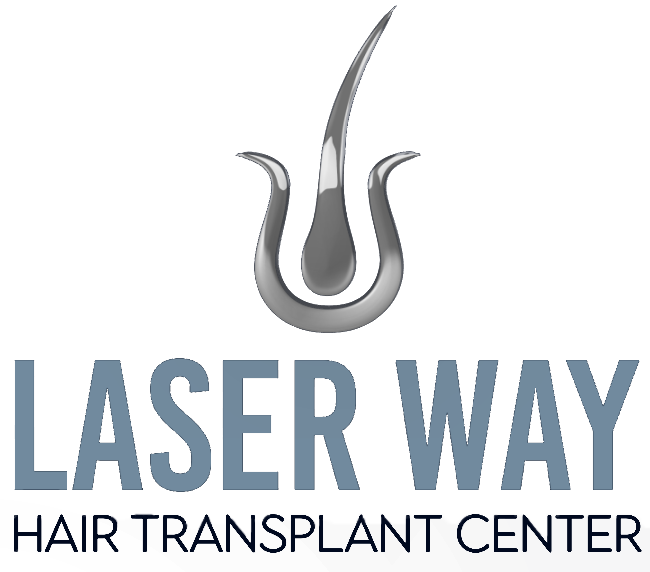Summer is a season for fun, relaxation, and outdoor adventures. If you recently had a hair transplant at Laser Way Clinic, you might wonder how to protect your results in the sun. Don’t worry—there’s no need to hide indoors until fall. With the right aftercare and precautions, you can safely soak up the summer vibes without putting your new hair at risk. Here’s everything you need to know about protecting your scalp after surgery.

Why Post-Transplant Care Is Essential
After a hair transplant, your scalp is going through a delicate healing process. How you care for it during this time can mean the difference between excellent results and less-than-ideal outcomes. When hair follicles are newly transplanted, they’re vulnerable to environmental stressors like UV rays, heat, and bacteria. These factors can slow healing, irritate your scalp, and even damage your grafts.
Sunny weather, in particular, presents challenges, as UV rays can interfere with healing and natural hair growth. However, with some simple strategies, you can protect your scalp and enjoy the summer carefree.
The Risks of Sun Exposure After a Hair Transplant
Why the Healing Scalp Is Sensitive
Immediately after your procedure, the tiny grafts on your scalp need time to take root and begin growing. These grafts are essentially small wounds that are extra sensitive to sunlight. Exposing them to direct sunlight during this critical phase can lead to redness, swelling, and even minor scarring.
UV radiation dangers include:
- Inflammation: Sun exposure can increase scalp irritation, prolonging healing.
- Healing disruption: UV rays can harm new grafts by breaking down collagen, a protein critical for recovery.
- Burns: Your scalp is more prone to sunburn post-procedure. Burns not only hurt but can delay healing.
How Long Should You Avoid the Sun?
The first three days after your transplant require the strictest precautions. During this period, it’s best to stay entirely out of sunlight to give your scalp a stress-free chance to start healing. After the initial phase, protection is still essential for at least two weeks and, ideally, a month to allow grafts time to fully settle.
Your Summer Sun Toolkit
Hats to the Rescue
Wearing a hat is one of the simplest ways to protect your scalp from the sun. However, not all hats are created equal. Here are some tips for picking the right one:
- Loose-fitting hats: Avoid anything tight that could rub against your scalp and dislodge grafts. Caps with adjustable straps are a solid option.
- Breathable fabrics: Look for lightweight materials, such as cotton or linen, that allow airflow to prevent overheating.
- Wide-brimmed hats: These offer the best defense, shading not just your scalp but also your face.
Introducing Sunscreen to Your Routine
You can start using sunscreen two weeks after your procedure. Mineral-based sunscreens containing zinc oxide or titanium dioxide are safe choices that won’t irritate your scalp. Always choose a broad-spectrum sunscreen with at least SPF 30, and reapply every two hours if you’re outdoors or swimming.
At Laser Way Clinic, we recommend testing a small area before applying sunscreen to your whole scalp to make sure your skin doesn’t react negatively.
Swimming Do’s and Don’ts After a Hair Transplant
Summer isn’t complete without a swim in the pool or sea. For hair transplant patients, timing is very important when swimming.
When to Avoid Water
For at least 14 days after your procedure, stay out of swimming pools, hot tubs, lakes, and seas. Water chemistry and bacteria found in some of these environments can irritate or infect your healing scalp. Chlorine, in particular, can dry out newly transplanted skin and slow down recovery.
Gradual Reintroduction
At the two-week mark, you can ease back into water activities. Start slow and observe how your scalp responds to brief swimming sessions.
- Pools: Rinse your scalp immediately after swimming to remove chlorine.
- Sea: Despite being natural, salt water can still dry your scalp, so shower afterward.
- Freshwater bodies: Lakes can contain bacteria, so proceed cautiously and ensure your scalp feels fully healed.
Staying Active Without Compromising Results
Exercise is key to staying healthy, but during your recovery, sweat can irritate your scalp and increase your risk of infection.
Week 1
Stick to light activities that don’t raise your heart rate too much. A casual walk is ideal—it promotes blood circulation without sweating. Avoid high-impact movements or bending over, as they could increase scalp pressure.
Week 2 and Beyond
After the first week, slowly increase your activity. Light jogging, yoga, and other low-sweat exercises are acceptable. If you’re engaging in anything that creates excessive perspiration, shower and gently cleanse your scalp afterward using mild shampoo.
Sports to Skip
Avoid contact sports, such as basketball, football, or martial arts, for at least a month. These activities pose a higher risk of scalp trauma, which can undo your transplant progress.
Maintaining Results Long-Term
Once you’ve fully recovered, don’t forget that regular care is the best way to keep your hair healthy. Unprotected exposure to UV rays can weaken even fully healed hair and contribute to ongoing hair loss. Keep UPF-rated hats and sunscreen among your summer essentials to preserve both your results and natural hair.
At Laser Way Clinic, we’re here to guide you not just during your recovery but for the long haul. We are here to help you get the look you want. Whether you need tips or follow-up care, we are dedicated to your success.
Move Toward Outdoor Fun with Confidence
A hair transplant doesn’t mean you have to lock yourself away from the sunshine. By following key precautions—like avoiding sun exposure during early recovery, wearing protective hats, and taking a cautious approach to swimming and exercise—you can stay active and protect your results.
Are you ready to take the first step toward a fuller head of hair? At Laser Way Clinic, our advanced techniques ensure natural, lasting outcomes. Contact us today to learn more or schedule your personalized consultation.
